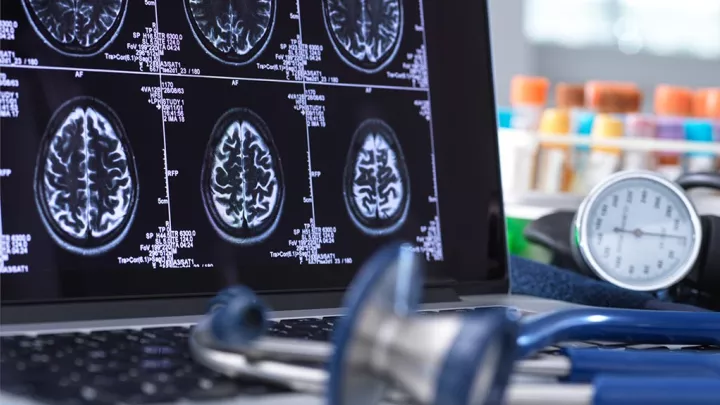
Matthew Borzage, PhD
Matthew Borzage, PhD, is a faculty researcher at Children’s Hospital Los Angeles with an interest in neurodevelopment focused on the flow of cerebrospinal fluid and blood in the brain. He is Associate Professor of Research Pediatrics at Keck School of Medicine of USC where he completed his doctoral thesis in biomedical engineering, with a focus on noninvasive methods for assessing the developing brain.
Education
MS, Biomedical Engineering, University of Southern California, Los Angeles, CA
PhD, Biomedical Engineering, University of Southern California, Los Angeles, CA
Accomplishments
Pediatric Academic Society
American Society of Functional Neuroradiography, 2010-Present
American Society of Functional Neuroradiography
Tau Beta Pi
Magnetic resonance imaging
Hydrocephalus and cerebrospinal fluid flow
Cerebral hemodynamics and development
Publications
Empirical model of human blood transverse relaxation at 3 T improves MRI T2 oximetry. Bush A, Borzage M, Detterich J, Kato RM, Meiselman HJ, Coates T, Wood JC. Magnetic Resonance in Medicine. 2016 Jul 6. doi: 10.1002/mrm.26311. [Epub ahead of print]
Determinants of resting cerebral blood flow in sickle cell disease. Bush AM, Borzage MT, Choi S, Václavů L, Tamrazi B, Nederveen AJ, Coates TD, Wood JC. American Journal of Hematology. 2016 Sep;91(9):912-7. doi: 10.1002/ajh.24441. Epub 2016 Jul 4.
Predictors of cerebral blood flow in patients with and without anemia. Borzage MT, Bush AM, Choi S, Nederveen AJ, Václavů L, Coates TD, Wood JC. Journal of Applied Physiology (1985). 2016 Apr 15;120(8):976-81. doi: 10.1152/japplphysiol.00994.2015. Epub 2016 Jan 21.
Equations to describe brain size across the continuum of human lifespan. Borzage M, Blüml S, Seri I.Brain Structure & Function. 2014 Jan;219(1):141-50. doi: 10.1007/s00429-012-0490-6. Epub 2012 Dec 14.
Neonatal hemodynamics: monitoring, data acquisition and analysis. Soleymani S, Borzage M, Noori S, Seri I. Expert Review of Medical Devices. 2012 Sep;9(5):501-11. doi: 10.1586/erd.12.32. Review.
Research
Development of non-invasive monitoring techniques for evaluating biological flow (blood, serum and cerebrospinal fluid), and evaluating neonatal brain development. Specific interests in MR-based methods for evaluating blood flow (Phase-Contrast MRI), and for evaluating CSF flow (Arterial Spin Labeling Variants).
Cerebral Blood Flow Response to Hyperoxia and Hypoxia in Patients with Sickle Cell Disease.
Comparison of Impediance Cardiography and MRI methods for Cardiac Output Measurement.
Monitoring CSF via TimeSLIP MRI methods in patients with neurosurgical indications of abnormal flow.
Research Topics
Hydrocephalus, Cerebral Blood Flow, Ventricular Morphology
Research Focus/Overview
Dr. Borzage’s primary training as a biomedical engineer enables him to work with the critical technologies of noninvasive data acquisition of cerebrospinal fluid and blood in the brain – specifically MR imaging and near infrared spectroscopy - with classic analysis techniques for these technologies and to have a critical working knowledge of the nature of the pathophysiologies that commonly impact flow in the brain, including disrupted CSF flow via Chiari malformations, spina bifida, post intraventricular hemorrhagic hydrocephalus, and disruptions of cerebral blood flow via anemia, specifically sickle- cell disease and other hemoglobinopathies. Combining his research interests and capabilities enables understanding the physiology that underlies some of the most devastating neurological pathologies.
Key Findings
- My primary contribution to the imaging assessment of CSF flow pathologies by creating new tag-based acquisition sequences which are a noninvasive method of acquiring information about CSF flow. My technique enables rapid acquisition of images that demonstrate flow dynamics and provides clinically relevant information about CSF communication. This is a technical improvement which improves image contrast by ~50% compared to Time-SLIP, and makes image interpretation and analysis more straightforward. These techniques are simple to acquire, robust to variations in practice, and allow rapid acquisitions appropriate for non-compliant pediatric patients.
- My contribution to the imaging assessment of cerebral blood flow is using existing phase-contrast MR sequences to investigate the mechanisms that control cerebral blood flow in patients. I determined that a critical determinant of cerebral blood flow was the oxygen carrying capacity of anemic patients. Related work with sequences that provide synergistic information enabled us to improve the accuracy of cerebral metabolism.
Current Funding
Rudi Schulte Research Institute: Co-PI Evaluate a multi-modal imaging evaluation integrated with clinical workflow to improve the sensitivity and specificity of workup for shunt-responsive hydrocephalus.
Rudi Schulte Research Institute: Co-I Visualization of CSF movement throughout the central nervous system.
Current Research Studies
CSF Evaluate a multi-modal imaging evaluation integrated with clinical workflow to improve the sensitivity and specificity of workup for shunt-responsive hydrocephalus.
Individual Cerebral Hemodynamics and Oxygenation Relationship, where I am deploying the routine acquisition of developmental biomarkers useful in the neuro-focused clinical care and research of neonatal patients.


